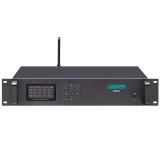

Leave a message



Wireless conference systems have gradually entered the public's field of vision, ranging from small national summits and ordinary offices, and more and more companies purchase wireless conference systems. The following DSPPA has compiled some introductory guides for you to purchase a wireless conference system:

The wireless conference system should improve the clarity of the conference room to avoid hearing fatigue of the participants. To achieve this, the conference system should produce natural sound at a comfortable sound level. Make sure to compare before making a decision, preferably in parallel. Listening to a poor-quality or unnatural sound system will annoy participants and go against the original intention of the system.

Obviously, the absence of wires means that battery power is required. Ensure that the battery of the wireless conference system can continue to supply power during the conference, and it is best to supply power for more than one conference. Therefore, it is best to choose lithium ion, which can be charged before being fully discharged.
There are two main technologies for wireless conference systems: radio frequency (RF) and infrared (IR). According to the way the system is used, choose the most suitable one (or both)
The wireless conference system has at least an access point or a base station, and a wireless representative unit. But some systems also require another central unit and additional software for control. Make sure you know the complete configuration required. Appropriate complete configuration can avoid unnecessary budget costs.

 【DSPPA Demo】PAVA8000 EN54 Voice Evacuation SystemNovember 12, 2020Abstract: DSPPA PAVA8000 EN54 Voice Evacuation SystemToday, we are gonna show you a demo about our PAVA8000 EN54 Voice Evacuation System.PAVA8000EN54 Voice Evacuation System can not only support manua...view
【DSPPA Demo】PAVA8000 EN54 Voice Evacuation SystemNovember 12, 2020Abstract: DSPPA PAVA8000 EN54 Voice Evacuation SystemToday, we are gonna show you a demo about our PAVA8000 EN54 Voice Evacuation System.PAVA8000EN54 Voice Evacuation System can not only support manua...view The National Standard Approval Meeting held in BeijingJuly 19, 2019The National Standard Approval Meeting held in BeijingThe approval meeting of the National StandardTechnical standard of public address system engineeringis held in Beijing on July 16, 2019. Xue Chang...view
The National Standard Approval Meeting held in BeijingJuly 19, 2019The National Standard Approval Meeting held in BeijingThe approval meeting of the National StandardTechnical standard of public address system engineeringis held in Beijing on July 16, 2019. Xue Chang...view


